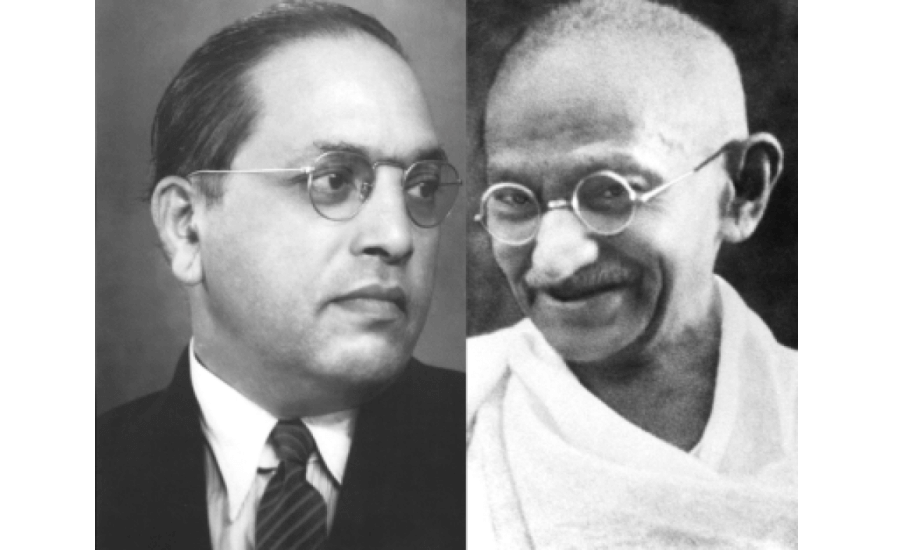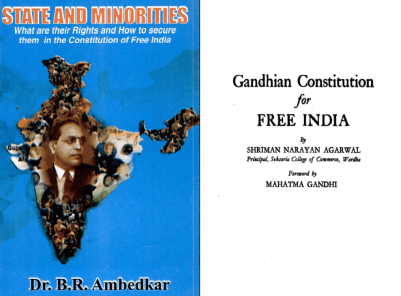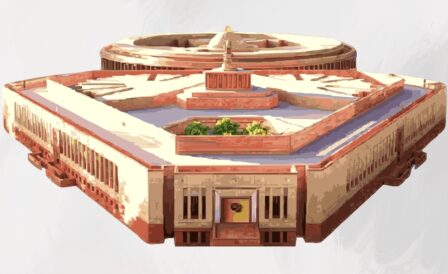
B.R. Ambedkar and M.K. Gandhi wrote and spoke widely on their political, social and economic visions for India. Their views on the caste system, particularly its role in the Indian future, have garnered wide attention – and rightly so, as both saw caste in dramatically different ways – though some argue that the differences were more nuanced. We saw this again recently around Gandhi Jayanti. Relatively less attention however, is paid to comparing other strands of their constitutional vision for India.
In this blog post, we compare Ambedkar and Gandhi on an important constitutional design feature – federalism. To do this, we take up two key documents. Ambedkar’s States and Minorities is a mini-constitution drafted by him on behalf of the Scheduled Castes Federation in 1945, and later submitted to the Constituent Assembly. As for Gandhi, we consider the Gandhian Constitution for Free India. Gandhian economist S.N. Agarwal published this document in 1946, and obtained a full endorsement from Gandhi himself.
While Ambedkar thought of the states as the fundamental political and administrative units, while Gandhi saw villages in the same role. Ambedkar wanted India to be a federation along the lines of the USA, even calling it the United States of India. States were conceived as viable financial and administrative units which could not be divided or distorted once they entered the Indian Union. Their exact political structure is not delineated, but the extensive duties of a ‘Qualified State’ laid out in Article 1 itself indicates the wide-ranging autonomy to be granted. This includes protection against external aggression, maintenance of law and order, and securing a decent standard of living for its citizens.

The Gandhian Constitution on the other hand, preferred an extreme form of decentralisation. All political power would flow up from the basic unit of the village. There was to be as much devolution of power to the local levels as possible. This included responsibility for school education, policing, village industries, markets, taxation and justice. Elections to the Village Panchayats would be the only direct elections a citizen participated in. A system of indirect representation would go up till an ‘All-India Panchayat’.
When the Draft Constitution of 1948 was presented in the Constituent Assembly for discussion, Gandhian members were surprised to see no mention of the village. They sharply criticised this omission as un-Indian. Replying to these critics, Ambedkar did not mince his words:
What is the village but a sink of localism, a den of ignorance, narrow-mindedness and communalism? I am glad that the Draft Constitution has discarded the village and adopted the individual as its unit. Share on XThis generated heated responses from the Gandhian members. In the end, the Constituent Assembly settled on what has often been described as a quasi-federal system. The Constitution recognised two tiers of government: the Union and the states. There was no mention of villages in the parts of the Constitution which dealt with India’s federal structure
However, in what appears to be a concession to those who wanted a stronger Gandhian imprint, promotion of village panchayats was included as a Directive Principle. Of course, the Gandhian vision of empowering local governments was enshrined later through the 73rd and 74th amendments to the Constitution.
More blog posts

Distribution of Wealth: The Unfulfilled Vision of the Constitution’s Framers
24 January 2023 • By Tanya Kini
The gap between India’s rich and poor continues to grow at an alarming rate, as evidenced by a recent report from Oxfam India. What did our Constitution framers think was the best way to combat wealth inequality?

Should Courts Review Delimitation?
19 June 2025 • By Vineeth Krishna
Earlier this month, on June 4, the Ministry of Home Affairs announced that the next Census will be conducted in 2027. Under Article 82 of the Constitution, parliamentary constituencies must be redrawn based on the latest Census, and a nationwide delimitation exercise is expected to follow.
